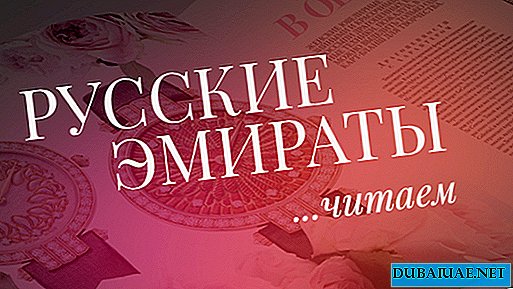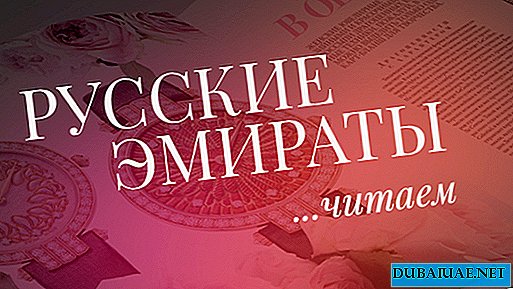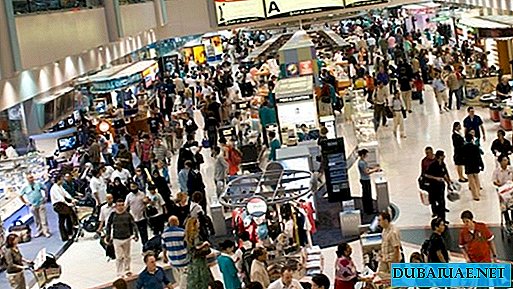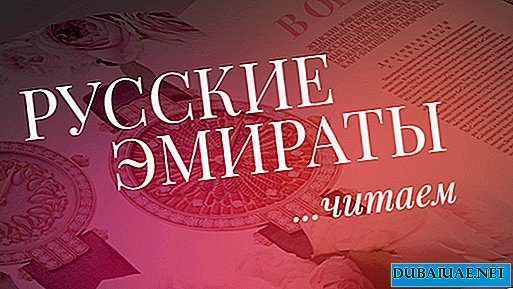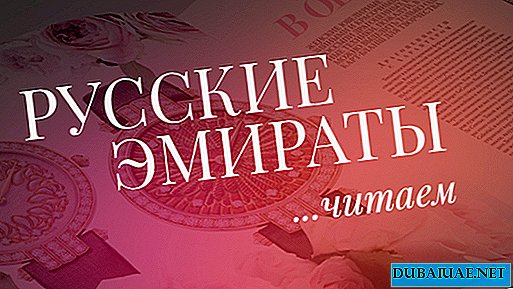 Text: Nikolai Gudalov, Master of International Relations, specialist in the history and politics of Arab countries
Text: Nikolai Gudalov, Master of International Relations, specialist in the history and politics of Arab countries "TO MANAGE A SHIP IN THE SEA - SAME TO MANAGE A CAMEL IN A DESERT," says the Emirate Proverb. FOR ANYTHING IT HAPPENED IN ARABIA, WHICH FROM AFTERWAY HAS BEEN THE KEY LINK OF THE GREAT SILK ROAD - AND MARINE, AND LAND.
At the mention of the Great Silk Road, most often we get majestic images of cities and deserts of Central Asia, through which caravans, loaded with various goods, stretched, connecting China and the western regions of Asia, East and West. But there was also the sea component of this road - lively trade between the countries of Southeast Asia, China, India, Iran, the Arab world, East Africa and Europe. The coast of modern United Arab Emirates has been one of the key links in this chain. This corner of Arabia was not alien to what its boundless sands are usually associated with - land caravan trade. Here lived the masters in that and in another matter. Just as the caravan men unmistakably found their way in the wind and figures in the sand, so the sailors knew the Indian Ocean and the starry sky above it like the back of their hand. With the rise of Europe and America, the center of gravity of international commerce has shifted, but now the development of East and South Asia and the Arab countries of Arabia is again provoking interest in the heritage of the Great Silk Road - not only among historians, but also among businessmen. The story of the history of the emirate lands usually begins with international trade. So, Akkadian and Sumerian cuneiform tablets about 2000 BC tell about the semi-legendary state of Magan (possibly modern Oman and the UAE), in which ships were built and which exported copper by sea to ancient Mesopotamia. This metal was mined in the Hajar mountains. Maybe already 4 thousand years ago a forest was delivered to Magan from India.
In antiquity, Magan may have traded incense, spices, myrrh and other incense with other ports in Arabia, East Africa and India. According to one legend, the famous Mines of King Solomon were even in Magan. The importance of these territories as a shipbuilding center remained in later times. Caravan routes also ran here.
 As you know, according to the Christian tradition, the magi offered the baby Jesus three gifts - gold, frankincense and myrrh (myrrh). Then these two incenses were much more expensive than yellow metal. The coast of modern UAE played a prominent role in trade between the Red Sea and the Persian Gulf, which the Iranians encouraged in the pre-Islamic era. A major commercial center was the Dibba region. There was an annual trade fair, which, according to one author of the Islamic period, was even attended by merchants from China (however, indisputable evidence of contacts between Arabia and the Middle Kingdom can be traced from the 15th century). The spread of Islam turned Arabia, as well as the conquered Persia, Mesopotamia, Syria, Egypt, most of North Africa into a more or less unified trading zone. Commerce was no longer hindered by conflicts between Byzantium and Persia.
As you know, according to the Christian tradition, the magi offered the baby Jesus three gifts - gold, frankincense and myrrh (myrrh). Then these two incenses were much more expensive than yellow metal. The coast of modern UAE played a prominent role in trade between the Red Sea and the Persian Gulf, which the Iranians encouraged in the pre-Islamic era. A major commercial center was the Dibba region. There was an annual trade fair, which, according to one author of the Islamic period, was even attended by merchants from China (however, indisputable evidence of contacts between Arabia and the Middle Kingdom can be traced from the 15th century). The spread of Islam turned Arabia, as well as the conquered Persia, Mesopotamia, Syria, Egypt, most of North Africa into a more or less unified trading zone. Commerce was no longer hindered by conflicts between Byzantium and Persia.
The Red Sea and the Persian Gulf have ceased to be rival routes, becoming part of the overall trading system. And on the other side of the Indian Ocean, in China, under the new Tang Dynasty, a period of rapid economic development began. As now, this has led to increased trading intensity.
The most important trading cities in the Islamic era were Qais, Calhat, Muscat, Mirbat and Sukhar in the territory of modern Oman, Julfar in the lands of the present Emirates, Basra, Hormuz and Siraf in Iran. Their prosperity or decline was influenced by many circumstances - natural conditions and the tax regime, wars and the political and economic situation in the world. For example, the ports of the southern coast were a very important link in providing a large market for Baghdad - the capital of the Caliphate - and other provinces. At the same time, trading cities on the north coast, such as Basra and Siraf, were not competitors for them. Ships from the last ports still entered the harbor of the southern coast. They not only replenished water supplies there and took away additional cargoes. The fact was that sailing through the ports of the southern shore of the Gulf made it possible to better use the seasonal winds - monsoons, which have long been caught by local merchants in their sails. In addition, it was in the ports of the south coast that large ships anchored for ocean crossings, and then smaller vessels delivered goods to Basra or Siraf.
In the X-XIII centuries, the importance of the Persian Gulf, while remaining significant, gradually decreased in favor of the Red Sea. In Egypt, the ambitious Fatimid dynasty attracted merchants to the country. By the way, this led to the rise of European cities - Venice and Genoa. In the Gulf - first in Bahrain, and then on some lands of the modern Emirates - the revolutionary Islamic sect of the Karmatians founded their own state.
This may have made his waters unsafe. The power of the Karmatians disintegrated in the 11th century. However, by that time the era of prosperity of Baghdad itself was already at the end. In 1258, the capital was captured by the Mongols. Against the backdrop of the Mongol raids and the weakening of central authority, the ruler of the large port city of Hormuz made a very wise decision: not to pay taxes to anyone and move the settlement to the island of Jirun, creating independent ownership there. So the New Hormuz appeared - an amazing shopping center in many respects. Jirun was a rocky, bare island 20 km in circumference, water had to be brought there from the Persian coast. However, its rulers managed to subjugate all the sheikhs of modern UAE and other lands, to remain the leading trade center between the West and the East for two centuries, despite the decline of Baghdad, build first-class harbors, achieve security in a turbulent environment, create their representative offices throughout the Indian Ocean ... Merchants in this city may even have limited the absolute power of the ruler. Merchants believed that Hormuz was a "safe haven." In the East and West, the proverb was known: "If the Earth were a ring, then Hormuz - a gem on it." In its heyday, the city overtook Amsterdam and London combined in terms of trade. Representatives of different nations and religions lived and traded here spices, incense, dyes, fabrics, jewelry, minerals.
Port Julfar (today the territory of the emirate of Ras Al Khaimah) shared with New Ormuz control over the entrance to the Persian Gulf. This city actively traded with China: porcelain shards found here by archaeologists speak of this. Exported Julfar pearls. Arab geographers and European travelers left a lot of messages about Julfar as a city of skillful and wealthy merchants. It was here that the legendary navigator and author of works on navigation, Ahmad ibn Majid, was born, who helped Vasco da Gama find his way to India. Julfar was also connected by caravan route to the trading city of AlAin, which lies inland.
The Indian Ocean was truly the home of many merchants in Arabia. Perhaps the most visible embodiment of this is African port cities, one of the founders of which were Arabs. These included Mombasa, Sofala, the harbor in Zanzibar. Of course, in the Arabian deserts from ancient times, caravan traffic has never stopped. A caravan could have a thousand, and sometimes two, two and a half thousand “desert ships”. Traditionally, the security of these processions laden with values was ensured by strong tribes through whose territory caravans marched. The southeastern "corner" of Arabia has never been the main area of land trade, but the local sands have seen many rows of camels. In addition, members of tribes who lived far in the desert usually made periodic transitions to cities in order to exchange their products there for urban products. Often the Bedouins took with them from coastal cities goods brought from afar by sea.
 For centuries, along the Great Silk Road - by land and sea - not only goods, but also ideas and inventions moved. It was the Arab sailors who tested the triangular sail in the Indian Ocean, ironically called later "Latin". Arabs, if not invented, then at least improved the compass. The first nautical charts of Europeans were based on the Arab. The distribution of porcelain and silk, tea and coffee, gunpowder, and, of course, figures called Arabic were not without Arab merchants.
For centuries, along the Great Silk Road - by land and sea - not only goods, but also ideas and inventions moved. It was the Arab sailors who tested the triangular sail in the Indian Ocean, ironically called later "Latin". Arabs, if not invented, then at least improved the compass. The first nautical charts of Europeans were based on the Arab. The distribution of porcelain and silk, tea and coffee, gunpowder, and, of course, figures called Arabic were not without Arab merchants.
The old tradition of Arabian maritime trade in the Indian Ocean was dealt a blow at the turn of the 15th-16th centuries, when a long era of European domination began. The first were the Portuguese, who, until about the middle of the 17th century, seized trade leadership across the ocean. They built fortifications, issued licenses, levied taxes, gave preferences to their merchants, and often simply plundered Arab ships.
The Portuguese were supplanted by the Dutch and British, participated in the competition for the alluring sphere of influence and the French. The winner was Great Britain, which, from about the end of the 18th century until the UAE gained independence in 1971, “patronized” the Persian Gulf sheikhs and dominated ocean trade. The most serious challenge to British hegemony was posed by the Kawashim tribe, which in the 18th century controlled a large part of the coast of the modern Emirates and had bases on the opposite bank of the Gulf. By the early 1800s, their fleet exceeded 500 ships. Great Britain was able to defeat this tribe only by 1819. Dubai gradually began to play a leading role in trade: it became a center for the export of pearls and shipping, organized by the British. Even then, the ruler of Dubai declared the emirate a “free port”, abolishing customs duties; merchants from Iran and India settled in the city. With the decline of the pearl industry, Dubai began to concentrate more on re-export trade. During World War II, Dubai merchants supplied a lot of food to Iran.
Interestingly, in the "British" period, the "first signs" of modern transport and infrastructure achievements appear in Treaty Oman. In the 1930s, the British built the first airfields, landing strips and gas stations for aircraft; in 1930, the first telegraph appeared in Sharjah, four years later - the first radio; In 1948, the first post office opened in Dubai. Under Sheikh Rashid (1958-1990), Dubai is again a leader in terms of transport development. So, in 1985, with a pair of leased planes and US $ 10 million of capital, the fast-paced success story of Emirates Airline began. This happened after the emirate of Dubai, whose success was envied, ceased to be served by one Arab air carrier. If the latter then knew what kind of competitor he creates for himself ...
After gaining independence, the "oil boom" in combination with a thousand-year tradition of enterprise and openness allow the UAE to loudly declare itself as a bridge between Europe, Asia and Africa. The establishment of world records has been turned into a routine here. Dubai already has an airport, which ranks seventh in the world in passenger traffic (sixth in terms of freight traffic and first in international passenger traffic!). Its Third Terminal is the largest building in the world in area. More than half of the world's population lives within an eight-hour flight to Dubai, and reaching Al Maktoum International Airport at full capacity (also by 2020) will give the emirate the world's largest air harbor. Dubai's Jebel Ali port, the world's largest human-made port, is among the top ten in terms of cargo turnover and is the busiest harbor between Asia and Europe. About as many goods pass through it as through the two largest US ports combined.
In just 10 years between 2000 and 2010, trade between the Middle East and East and South Asia showed an increase of 700%. It is not surprising that the UAE is enthusiastically reviving the idea of the Great Silk Road - the path of the sea, air and even electronic links in the field of business and culture. Perhaps, there is a lack of only one component - their own innovations, which once wandered from China and the Arab world to the West, and now basically go in the opposite direction. However, the rich heritage and energy of the emirates allow us to hope for a better future in this regard.
Immersion in history
Islam as a religion favors trade. It was not born among the Bedouins or peasants, but in the atmosphere of a large commercial and financial center - Mecca.
Prophet Muhammad was associated with this business environment. Muslims also not without reason chose the lunar calendar, which, unlike the sun, is not related to agriculture.
It was the pious Muslim merchants, primarily sailors, who played the main role in the spread of Islam in such regions as East and West Africa, Southeast Asia.
By the way, the Arabs themselves from the coast of the modern Emirates got acquainted with the new religion in many respects during their visits to fairs famous throughout Arabia in the village of Ukaz in the south of Mecca. At that time, the ancestors of the Emirates and Omani were especially famous for the trade in fabrics.
Sailing lessons
The Indian Ocean was the home of the merchants of Arabia. The most visible embodiment of this is African port cities, one of the founders of which were Arabs. These included Mombasa, Sofala, the harbor in Zanzibar.
It was the Arab sailors who tested the triangular sail in the Indian Ocean, ironically called later "Latin".
Russia and the Arab world
In his “Walking Over Three Seas,” the Tver merchant Afanasy Nikitin wrote: “The sun’s heat in Hormuz is great, it will burn a man.”
After spending a month in Hormuz, Nikitin went to Muscat. In general, Russia maintained contacts with the Arab world from the very beginning of its history.
In the IX-X centuries, the Caliphate was its main trading partner; on the basis of the dirham, the first Russian money arose.



